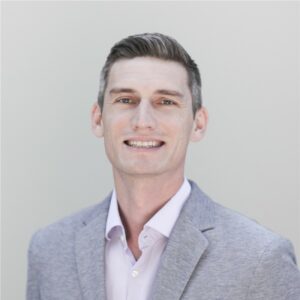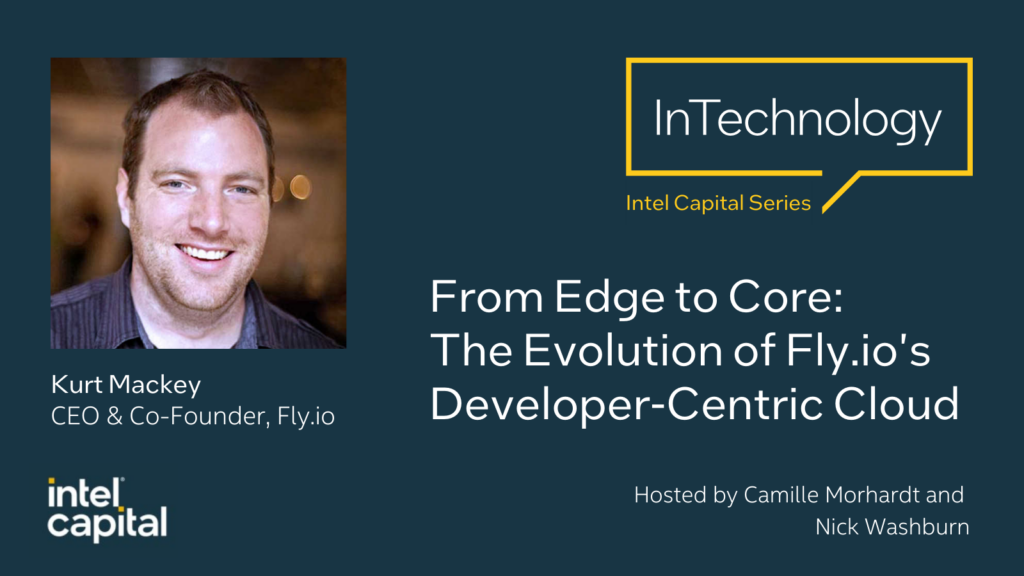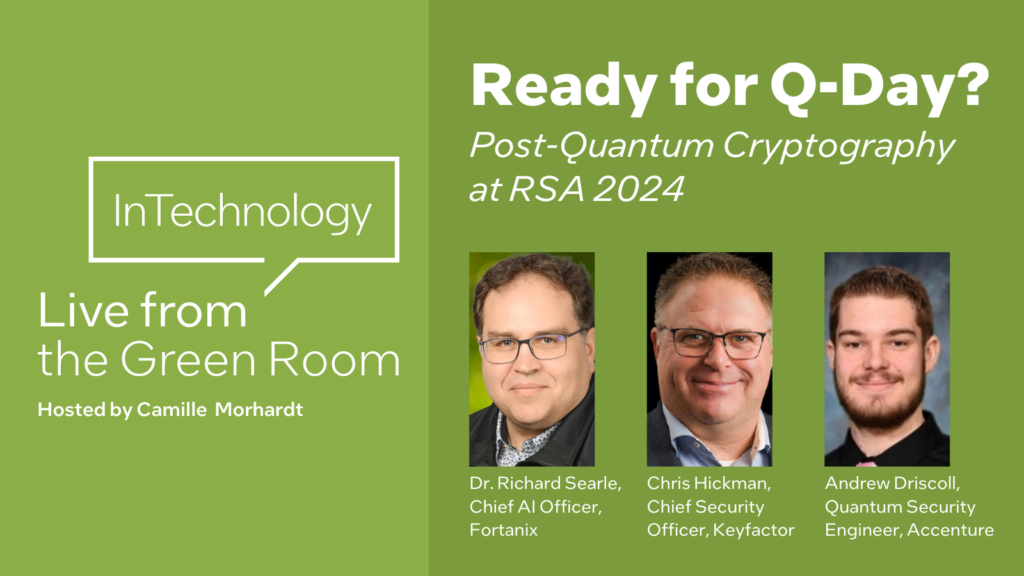Camille Morhardt 00:23
Hi, I’m Camille Morhardt, host of InTechnology podcast. Today we’re kicking off a series in partnership with Intel Capital, which is the investment and acquisition division for Intel Corporation. In this series, I’m going to co-host executives from actual companies that Intel Capital has invested in with actual portfolio managers who make the decisions to invest. It will be a little bit different style conversation, and we’ll get to know what these companies are all about.
Today, I am co-hosting with Jen Ard, who’s a Managing Director and Head of Investment Operations for Intel Capital. She’s primarily focused on investing in silicon-related companies, which to me seems the most technically challenging and complex kind of company to look at. She actually got into this space originally as a finance controller supporting Intel’s over $3 billion investment in a company that uses extreme ultraviolet lithography to print silicon wafers. And that has been dubbed by some as actually saving Moore’s Law. As she says, “If you understand EUV litho, you understand the most important part of manufacturing chips.” So, she’s been in this space, she has a very deep understanding of what it is. And she’s been with Intel Capital since 2011.
Welcome to the podcast, Jen. I look forward to co-hosting with you. And who have you brought to the conversation today?
Jen Ard 01:46
We are super excited to have our Intel Capital portfolio companies on InTechnology, so thank you for kicking off the series. Ian Winfield is the VP of Product and Application at Fabric8Labs. Ian has over 15 years of experience in nanostructure and composite materials as well as additive manufacturing. Immediately prior to Fabric8Labs, he was at Viasat where he was the Director of Business Operations. Ironically, Ian you were at another electrochemical company before your last company and kind of had decided to leave the field. We’re really excited that you decided to come back; in fact, Ian joined just right after we made our Series A investment which is really where Intel Capital put our first money into the company. We were ecstatic to get Ian on board. We were kind of joking that he just hadn’t found the right electrochemical company. So, Ian, what made you decide to join Fabric8?
Ian Winfield 02:45
Yeah, thanks Jen and Camille for hosting us. We’re really excited to be on the podcast. Yeah, my background is in materials science and engineering; I really focused on electrochemistry and using electrochemistry to make advanced materials and nanostructured materials. But ultimately, most of that world is in thin film coatings. So, you’re typically applying a coating to something else– either decorative even car bumpers or electroplated–or functional coatings, like hard chrome on an actuator or something like that for wear resistance. And so, the world of electrochemistry and thin coatings felt limiting to me. And so, I went off on this journey to explore other things.
And I ran into the Fabric8Labs co-founders, Jeff and David, and started talking to them. And they showed me a little Eiffel tower that they had printed using electrochemistry. And I just held it in my hand and I said, “This isn’t possible to do this with electrochemistry.” So, I was really blown away, I knew that there was really something special with the technology. And that just captivated me. And so, you know, I kind of laughed at myself. And I said, “alright, let’s get back into electrochemistry. And join Jeff and David on this journey.” And it’s been an amazing experience so far.
Camille Morhardt 04:02
So Ian, what does Fabric8Labs do at the highest level? And what is it solving?
Ian Winfield 04:08
At our core, we’re an advanced manufacturing technology company and a foundry using our technology to provide parts. The core technology that we’ve invented and matured and developed is called electrochemical additive manufacturing. So, it is an additive manufacturing or 3D printing type of technology. But it’s incredibly different than any other AM technology out there. And some people looking on the outside, they’ll say, “hey, I see additive manufacturing. It can do amazing things. I can make these amazing parts–the performance of those parts is great–however, it’s incredibly difficult to scale or in some cases, it doesn’t scale.” That’s exactly the problem that we’ve solved. We have invented a technology and are scaling a technology that actually can support mass manufacturing going into the millions or even some of our electronics components into the billions of units per year. And that’s one of the big unlocks that we’re able to bring and give people access to 3D printing at scale.
Jen Ard 05:08
Ian, I have to admit the Eiffel Tower was one of our first kind of demos, as well. We were super impressed. We had had a thesis around additive manufacturing, going into semiconductor manufacturing, you know, at some point, but we hadn’t really found where and how until we met Fabric8. And part of the reason we were so excited is the process is just so unique. One is they don’t use powders–metal powders–they’re using liquid copper, which copper is used in semiconductor manufacturing and electronics, it’s super conductive. Maybe just talk about what is the specific process you’re using? and why is that liquid copper so game changing?
Ian Winfield 05:48
It really is quite different. And you kind of alluded to it already, Jen is that when you look at metal 3D printing out there today, it’s really just based off metal powder. And there’s a couple methods that are really common. There’s a laser-based laser powder bed fusion, where you’re basically tracing a laser, you’re melting the part and you’re kind of melting powder on top of that part as you’re building it. The other one that’s really popular is binder jetting, that’s when you’re mixing the powder with binding agents and then you’re centering it to densify the part. But this comes with a lot of constraints, maybe we can talk about in a moment. But our process ECAM, as you mentioned, it’s liquid based.
So what we’ve done here is we’re combining electrochemistry, or electroplating–kind of that thin film coating technology that I was mentioning earlier–also the same type of electroplating that’s used in semiconductor packaging, to fill vias and do things like that. And we’ve taken electrochemistry and combined it with display technology. And what I mean by display technology, it’s the same type of display that’s in an iPhone or a flat screen TV or a monitor. And the way that the system works, as you can imagine, at the bottom of the chamber, there’s a display. And then we have a plate on the top, your bill plates on the top parts are built up there, that displays on the bottom, and the plate moves up and down. And then we’ll flow that water-based solution in between the two plates. And now we have this copper that’s in a water form flowing between the plates. And because we’re using the display, now imagine we can activate any image or any picture that you want. Whatever image we activate on the display, it will project onto that top plate and start to deposit metal in that pattern. And that’s incredibly important because when you dive in, these pixels are anywhere from a half to a third to 1/5 the thickness of a human hair. So now we’ve got incredible resolution, incredible precision at how we can control and deposit copper. And we’re using this water-based feedstock, which allows us to basically use raw copper at the spot price of copper, versus these metal powders, which cost hundreds or even into the 1000s of dollars per kilogram. You know, we’re talking about raw copper for the spot price, which is maybe $9 a kilogram or so today.
Jen Ard 08:01
You know you talked about that display part, that has been part of the main development that the company has had to do over the last three years. Now the company seems to be adding about a printer a day really getting that manufacturing up. So maybe just talk about status. Where are you guys at product readiness?
Ian Winfield 08:18
Yeah, it’s definitely been a lot of investment to get the technology from very small-scale stuff early on, like around the Series A time we had about a one inch by one inch build area. And now we’ve scaled up that build area to about five inches by five inches in print area. And we’ve upgraded our equipment to be essentially a production tool rather than an R&D tool. And that production tool is now being deployed, as you mentioned, into our pilot production facility.
We have a full pilot scale production plant that has a capacity of about 240 printers. And today we’ve got just under 50 printers built into that facility. These printers are very efficient machines. So, they’re simpler to build, let’s say than a very complex laser system. And so that’s how we can deploy them at the rate that Jen was mentioning about a printer a day. And each of these printers has the capacity to generate a significant amount of part volume. And you know, and we’re targeting some early applications and thermal management and RF that will go into market later this year.
Camille Morhardt 09:26
That’s a lot of Eiffel Towers. No, I’m just kidding. Can you tell us So what kinds of things you’re making? And also, I’m just curious, like, how big are these printers?
Ian Winfield 09:35
Yeah, so the printers themselves are kind of about the size of maybe a small refrigerator. So you can line them up sequentially, side by side. And then you can feed them all with one plumbing system, which is one of the other benefits of using this water-based feedstock. We don’t need to bring raw material to the printer, we just have a plumbing system that allows us to provide the raw copper feedstock to each printer. So, it makes it easier to scale up those units. You can just imagine a row of these small refrigerator-sized machines just extending out. And so, we’re using them to make a number of different devices. We focus on pure copper. Pure copper has excellent thermal conductivity and electrical conductivity so it opens up a wide range of applications for us.
Where we’re seeing the most traction is in thermal management and RF devices. So thermal management is a really critical one. And quite timely with all of the buzz and AI and machine learning. Because these chips that are going into data centers are just getting hotter and hotter and the power densities are going up. H100s are in the range of about a 700 watt or so thermal design power, but chips are going all the way up to a kilowatt, two kilowatts, three kilowatts down the road. And we have to move away from air cooling, because air cooling is not sufficient enough to get the heat out. And it also uses a lot of energy. So, we’re making liquid cold plates. These are copper plates that sit right on the chip. And they have bunch of high-resolution thin features. And water or coolant–typically with some water and some other mixtures–will flow across that plate and remove heat out of the system. And this is really a massive application, you can imagine every single pipe power chip is going to have a cold plate on it. And so, we’re heavily focused on liquid cooling applications and data center, as well as automotive; automotive has the same problem with chips or power modules where they need to get heat out of the system.
The other one is in RF. So, this is things like phased arrays, feed horns, antennas, satellite communication systems, 5G base stations, automotive radar, which is another really interesting 3D antenna application that we’ve been developing. The list could go almost on forever. So I’ll pause for a moment there because it’s quite extensive.
Jen Ard 11:52
The thermal piece is a part that Intel’s really excited about. Obviously, thermals is a really hot topic, no pun intended. And really, with the introduction of AI, thermal properties and thermal issues are only going to get worse. Maybe you know, AI is the hot topic. What are you seeing in terms of AI from a customer base? Like what are their needs? Why are they so excited about Fabric8?
Ian Winfield 12:19
What we’re seeing is that many of these players are developing their custom silicon to suit their own needs. And what ultimately happens at the end is you have a chip that’s very high powered, but also very non-uniform, in terms of where the hotspots are in the chip. And you might have your HBN your high bandwidth memory next to your silicon, which has a different power output has a different operating temperature than the silicon. And now you have to manage this non-uniform heat map. Most of the thermal products that are out there today are these straight fin types of structures. It’s called a sky fin full plate, it’s very common, those do not allow you to address the non-uniformity of the heat map.
And so, what we’re bringing to customers is we are taking the heat map, we’re putting that as an input into generative software; the software is now taking the ECAM manufacturing rules and the inputs and the design goals and it’s generating design for us. So now the software is telling us what the design needs to look like. And we have the ECAM technology that can manufacture that device at scale. So really, what you have now is you have for every single custom chip or any commonly available chip out there, you can design a thermal solution specific to that chipset that addresses the non-uniform temperature distribution on that plate, and also gives you enhancements in thermal performance overall and hydraulic performance, which means lower total cost of ownership for the data center operators.
Camille Morhardt 13:50
I have a question about you also operate as a foundry. How hard is it or how long does it take to switch between different designs? Is this one of those things that you can spin up very quickly? Or is it like a major kind of infrastructure change to switch patterns or companies?
Ian Winfield 14:05
That’s one of the benefits of the technology is that we really don’t have to do a lot of work to make a change. So today in the R&D environment, let’s say you could take a printer, I could print a cold plate on it today and tomorrow, I could print an antenna and the machine doesn’t have to change at all. So, it’s really is a tool-less of setup in that regards. And a lot of AM operates that way where they take a low volume high mix approach where they’re going to print one thing one day and one thing the next day and use that as a benefit to balance their workload. But the way that we’re tackling it is a little bit different. We are really targeting these high-volume applications where units are going to be 10,000 or 20,000 units of a single SKU per week. And so, what we are planning for is a block of printers, ten, twenty, 50 printers will all be printing the same thing every day for a year and then maybe change the design a little bit when the next chipset comes out and then print that design for a year.
So it’s a little bit different than a lot of other AM out there. We’re not looking necessarily for this high mix between printers. We’re looking for these really high-volume opportunities.
Jen Ard 15:15
One of the areas, switching gears a little, but that quite honestly, when we made the investment we weren’t really thinking about was the sustainability aspect; the ECAM process compared to what companies are doing right now is really, really innovative and unique in its ability to actually be more sustainable. Maybe just talk for a minute about how you’re thinking about that? How sustainable is it? What kind of feedback are you getting on that front?
Ian Winfield 15:42
Yeah, that’s been one of the other nice benefits of the technology, and has been pretty important for a number of our customers who have certain environmental targets or ESG targets. So, the amount of energy that it takes to go from, you can measure it raw materials all the way to your final part, you can track that and there’s groups that will do analysis on that, which is one of the studies that we commissioned to take a look at our technology and compare it to some of the other manufacturing technologies out there–both 3D printing, as well as traditional technologies like casting, for example.
And what we found is that, because of the way that our technology works, electrochemical conversion of the metal from an ion to a metal form is really efficient. You could plug one of these printers into your house and run it; you don’t need a lot of power. And you can also take scrap copper and dissolve it into the water-based feedstock just by mixing it to replenish your copper source. And now you have this sort of circular cradle-to-cradle type of thing instead of cradle-to-grave, where you’re reusing scrap copper. And because of the low energy of electrochemical conversion, the low inputs on the raw materials, you don’t have to refine copper; you can take it in the metal soft form. We’re able to achieve about a 90% reduction in greenhouse gas emissions on let’s say, a pound for pound basis, a pound of co2 equivalent per pound of copper printed or produced or manufactured, we’re about 90% lower on the co2 equivalent emissions. And that’s pretty exciting for us. It means that we can effectively be carbon neutral, we could run a whole facility on solar.
And then there’s not really a waste stream from the printing system, that water-based feedstock simply pumps through, copper gets pulled out during printing, and we just bounce copper back in through an automated system. And so, we don’t have to dump any of this material out, you can keep using it for ten years or more if you maintain it properly. So, it becomes a very sustainable method to manufacture parts at high volumes. We think that’s a really important benefit and it’s just a great thing to be able to offer partners and to be able to scale up. So, one of the things to feel good about about the technology.
Camille Morhardt 17:52
Not only that, but you mentioned room temperature printing. Can you say a little bit more about that?
Ian Winfield 17:57
Yeah, and that’s another thing that’s kind of crazy to think about forming metals at room temperature, because these other systems, they need temperature to fuse the metal powder. So, laser systems are melting it, binder jetting your sentry in and high temperature ovens. In electrochemistry, you’re working with water. So, by default, you can’t go over the boiling temperature. So, you’re going to be at these lower temperatures. And copper happens to be one of the systems that works very well at the 20-25 degrees C type of range. And so, you don’t need to heat up the system at all to produce these pure solid copper parts. It really reduces the overall energy in, energy balance, energy consumption. And it also makes it much more scalable, because you can just operate this whole fleet of printers in one facility without having to provide a huge amount of power to it.
Camille Morhardt 18:45
Yeah, Jen, I’m actually wondering, looking forward a little bit, you know, what is kind of your vision? I mean, why did you believe not so much investing in Fabric8Labs, specifically, but like, what about this industry? Where do you see this kind of printing going, you know? And what is the time horizon that you look at when you’re evaluating this?
Jen Ard 19:12
You know, at the heart of it, we’re looking for a few things. One, is a great management team, which we definitely feel like we found with Fabric8Labs, right? Every startup goes through pivots, every startup incurs challenges; we’ve been super impressed with the management team being able to make changes and adjust as they get market feedback. So that’s, you know, one area.
Second area is we’re looking for really unique technologies. When we found fabric eight, we were just really impressed that you could again use liquid copper that we could get down to micron scale, which is really important for semiconductor and electronic manufacturing. And then the uniqueness of the technology. We had not seen anything like this with what we’re seeing with Fabric8Labs. So that, that’s what got us interested. Those are really the things we look at in all of our new investments.
We really had this theory that additive was going to be more and more important in electronics manufacturing, and this has really started to play out with Fabric8Labs. We actually think that the Fabric8Labs team has years ahead of them in terms of just where they can even touch within the electronics space. You know, within semiconductor thermal is a huge area that touches almost anyone who is operating a data center at this point; the RF components, you know, that is, again, a really important part. In the future, we can see them being used for advanced packaging for semiconductor. And for other areas.
We’re just really excited. And the future, you know, we absolutely think that by the end of the year, there’ll be producing production parts for customers that’ll get built into products. We’re really excited about that. And they have a pipeline of just myriads of opportunities.
Ian Winfield 20:54
Yeah, I mean, electronics is so big that it’s almost impossible to stop within that, because we can go in so many places. Cause we’re going beyond thermal and RF going into passive components going into power electronics, DC-DC converter types of things, semiconductor packaging.
But there’s another whole world out there that’s not copper that we can also do. So, there’s a lot of materials that can be electroplated. Things like nickel, nickel alloys, platinum, palladium, gold, tungsten alloys. So, there’s a number of other alloys that we have been working on. And I’d say probably one of the biggest other categories or markets that we are targeting as medical devices. And in medical devices, specifically, we’ve got a number of applications, one of the really big exciting ones that we see a lot of interest in is minimally-invasive surgical tools. So, these are just really, really small tools for intravenous surgeries, where there’s kind of a wire going in to your veins. And they’re very, very difficult to manufacture and the industry, they want them to be single-use, because they don’t want to risk contamination between patients. And so, it makes it very challenging to make these high-resolution products that can be deployed at scale at reasonable costs. And so, we’ve done some biocompatibility testing on one of our alloys and shown that it meets all the biocompatibility requirements for surgical tools. And so that’s another area that’s coming down the pipe for us.
We can even look at things, you know, like catalysts with platinum and palladium; we’re seeing interest for these intricate lattice structures and that can be used in fuel cells or in oil and gas. So, there’s really just a huge amount of other opportunities beyond the electronic space. Micro mechanical components, you know, very small structural components that would be very difficult to manufacture, we could fabricate those with our high strength nickel alloys.
Camille Morhardt 22:49
Very cool. And do you think in the future, customers would just have their own 3D printers or additive manufacturing mini plants, in a sense, because you can switch parts easily and you can do different kinds of metals? I mean, what’s the kind of role down the line for this?
Ian Winfield 23:03
Yeah, there’s definitely some opportunities there. We’re focused really on scaling the technology as best possible; and the way that we’ve concluded the best way to do that is to centralize it. And to put printers together in a fleet and to put expertise together. Down the road, though, you could see strategic partnerships we have where we build out facilities globally; that is in our plan to deploy multiple sites. So definitely, you know, we’re remained pretty flexible. As a startup, we’re always flexible for the future. But we do have our core plans and that’s going to be to build out this pilot production facility, prove out all of the economics that we’ve demonstrated at lower volumes, and then replicate it 10x and build a 2,500 printer facility. And then from there, we’ll just start to put deployments where it makes sense where it needs to be within supply chain depending on the specific markets that that facility might be serving.
Camille Morhardt 23:59
Ian Winfield of Fabric8Labs, thank you so much for your time today. And Jen Ard, Intel Capital Portfolio Manager, responsible for the investment in Fabric8Labs, thanks so much for co-hosting with me today.
Jen Ard 24:10
Thanks for having us, Camille.
Ian Winfield 24:12
Yeah. Thanks very much Camille and Jen for the opportunity to be on the podcast. We appreciate it and we appreciate all the support.





